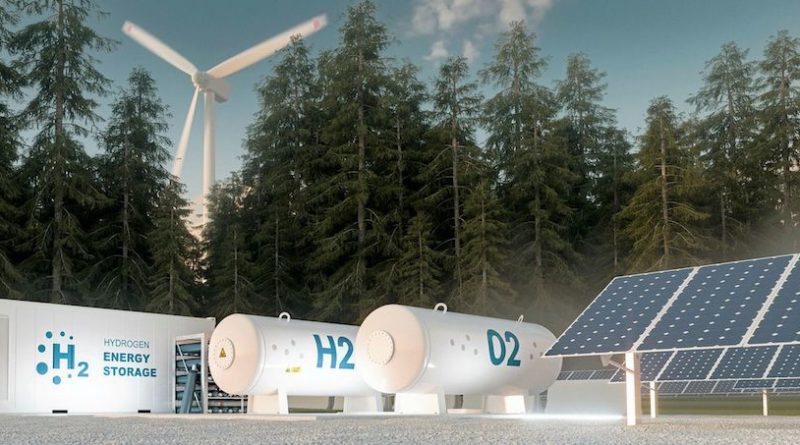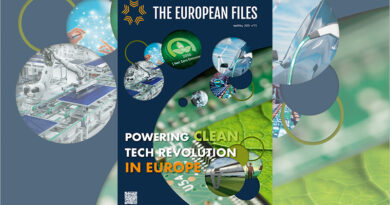
Hydrogen, the key to decarbonising our industry: the example of energy-intensive sectors.
State of the Union in 2020: Commission President Ursula von der Leyen explains how the EU can combine the recovery from the pandemic with the conviction to transform the economy towards net-zero emission by 2050 or even earlier. One of the technologies mentioned is the use of clean hydrogen for the steel production. Indeed, the Commission paved the way for the use of clean hydrogen in the energy- intensive sectors. If we would look back on the summer of 2020 in the year 2050, then the historical dimension of the energy policy decisions for the energy sector becomes more than clear: The EU and many Member States have each worked on a hydrogen strategy and finally got it off the ground. With this, Europe has set itself ambitious goals: by 2024 the EU wants to deliver one million tons of renewable hydrogen, by 2030 the target is 10 million tons of renewable hydrogen.
In order to get there we need to kick off and to start implementing very soon, as 2024 is round the corner and is within the mandate of the current Commission of Ursula von der Leyen.
It is remarkable that this kind of self engagement has been decided by the European Commission putting pressure not only on the political decision makers but also on the respective industries.
After many years of being considered as a science-fiction fantasy or a niche technology, hydrogen has finally reached the mainstream. Not only are many EU Member States building their long-term climate strategy around hydrogen, but they are also considering it to be a key missing link between different energy sectors. Alongside them, the European Commission has realised the important role hydrogen can play in the energy transition towards a net zero society. This was showcased on 8 July 2020 – a historical day in this respect – as the Commission published its “Powering a climate neutral economy: An EU Strategy for Energy System Integration” and the accompanying communication “A hydrogen strategy for a climate-neutral Europe”. The fact that the European Com- mission has decided to present a dedicated communication on a hydrogen strategy is testament to the commitment for systemic change away from fossil fuels, and towards electricity and hydrogen in order to achieve the EU’s 2030 and 2050 climate targets. In addition to the Hydrogen Strategy, the energy systems integration package already contains many elements of how to use hydrogen in order to couple the power and the gas grids, boosting the new hydrogen reality.
In this framework, the industry understands the catalytic role of the COVID-19 crisis and the many possibilities of the post-corona recovery ambition. As climate effects worsen – as seen in the ongoing hot summers and their dramatic consequences – we need to become faster in achieving the Paris Agreement goals. For this reasons, more than 110 CEOs signed a letter to the European Commission underlining their clear readiness and ambition to act on the basis of a blueprint that has been built on the vision of a 2×40 GW electrolyser initiative, putting hydrogen at the heart of renewable energy before 2030. Of that, 40 GW will be within the EU and another 40 GW outside in the neighboring regions of Ukraine and Northern Africa.
This ambition has already become a guiding principle for many industries, leading to clear announcements such as the NortH2 project with an investment of €15 billion over the next 10 years to build up a capacity of 10 GW in the North Sea, with corresponding electrolysers onshore and offshore.
The project pipeline required for this is to be established by the end of this year. The instrument foreseen for the implementation of the strategy is the European Clean Hydrogen Alliance (ECH2A), which will create the necessary framework for this. There is no doubt: Green hydrogen is the focus of all efforts to achieve the desired CO2 neutrality in 2050. It is to be foreseen that a new category will be born, the so called “HydroGenewables” being produced directly at the source of the renewable energy and being transported cheaply via a European hydrogen backbone to the sites of demand, starting from the chemical and the steel industry. The use of clean hydrogen in the energy-intensive sectors and industries is the low hanging fruit that can lead to immediate use of it as a chemical feedstock. So it’s these sectors that can help overcome the famous “chicken and egg dilemma” immediately and hence kick-off the transition into the net-zero emission era.
Following this trajectory the EU will be the starting point for the development of clean hydrogen as a global commodity, denominated in Euro rather than any other currency. The world is watching, and we have the opportunity to promote a disruptive industrial revolution that will create new value chains, jobs and boost EU competitiveness globally while promoting and supporting sustainable development goals. With a view to future legislative initiatives, the EU should strive to develop a blueprint for a hydrogen market design that can be replicated by other geographies. In doing this, Europe will become the birthplace of the global hydrogen economy, forming the foundations for a globally traded market.
The vision for increased HydroGenewables has become concrete – the path is now clear for Europe to realise its hydrogen future.




